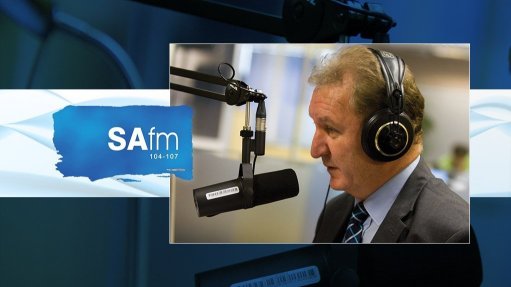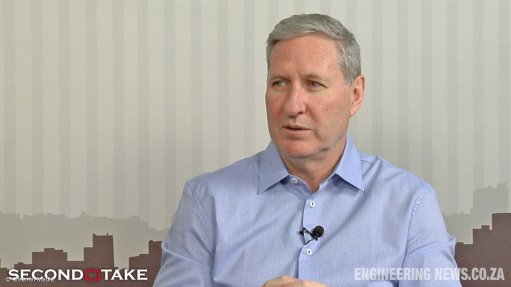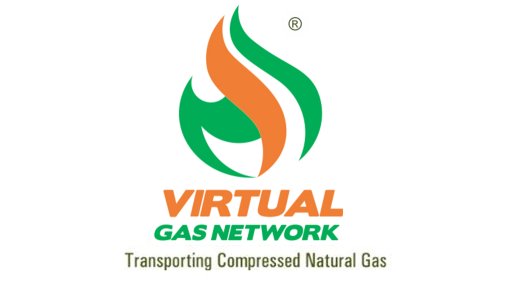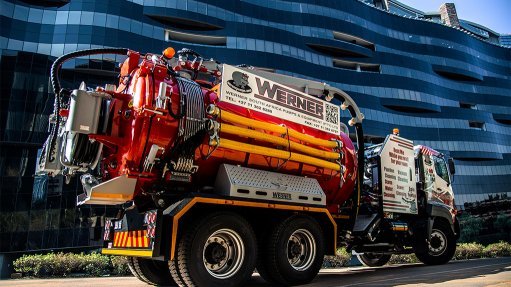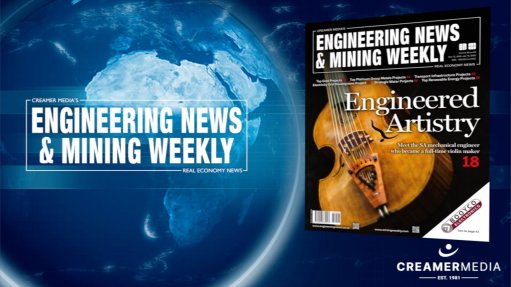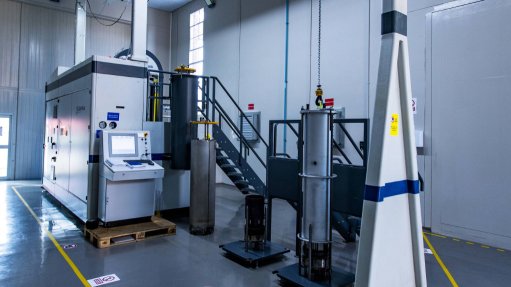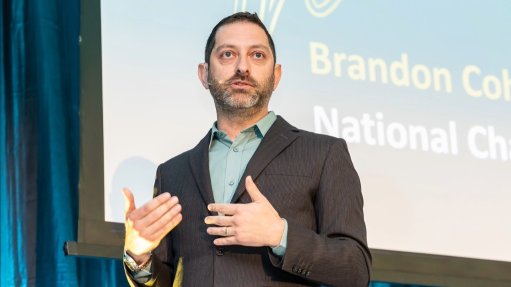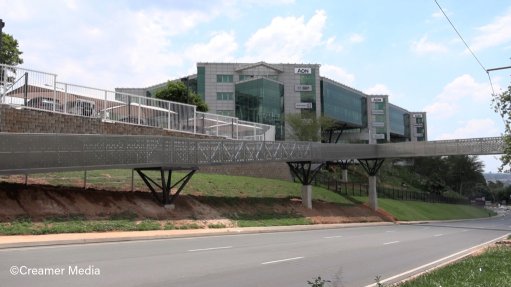Grand Ethiopian Renaissance Dam, Ethiopia – update

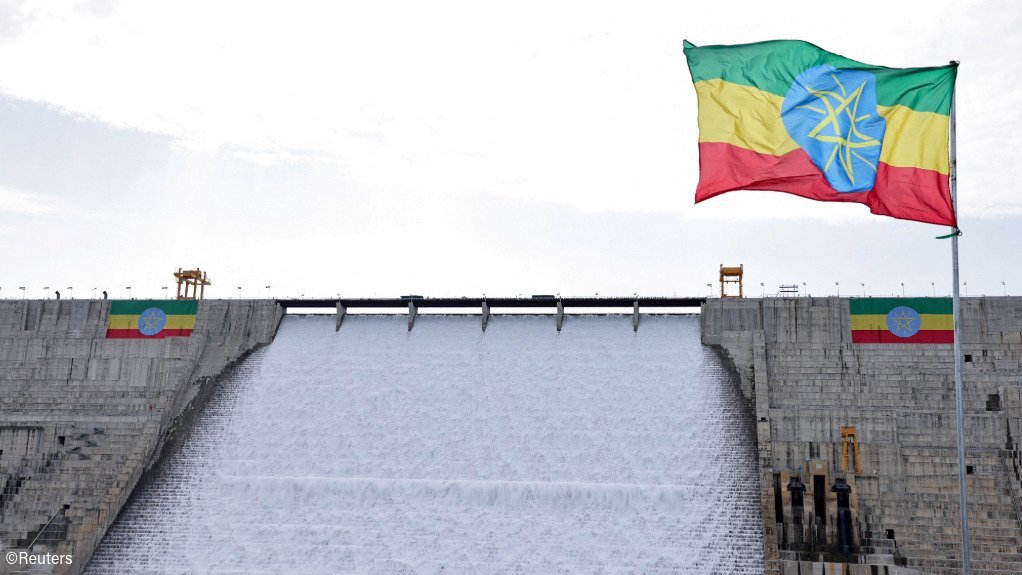
Photo by ©Reuters
Name of the Project
Grand Ethiopian Renaissance Dam (GERD).
Location
On the Abay river, in the Beneshangul Gumuz region of Ethiopia.
Project Owner/s
Ethiopian Electric Power Corporation (EEPCo).
Project Description
The project envisages a plant with an installed capacity of about 5 000 MW that will supply 15 692 GWh/y.
The major components of the project include:
- a 145-m-high, roller-compacted-concrete (RCC) dam with a 1 780-m-long crest;
- a rock-filled saddle dam, 4 800 m long and 45 m high, with a bituminous surface facing;
- two outdoor powerhouses of 3 750 MW and 2 250 MW installed capacity, containing ten and six generating units respectively, each with a capacity of 375 MW; and
- a 500 kV switchyard, which will transmit power from the two powerhouses to the grid.
The main dam and saddle dam will create 74-billion cubic metres of impounding capacity, with a surface area of 1 680 km2 at full capacity.
A gated spillway, equipped with six radial gates and a discharge capacity of 14 700 m3/s at probable maximum flood occurrence, will be located on the left side of the main dam.
A saddle dam on the left side of the RCC dam, with an emergency side spillway, is envisaged to allow for the discharge of floodwater directly into the Roseires reservoir.
The construction of 123 km of access roads, as well as camps, workshops and other civil works, forms part of the activities for the project.
Potential Job Creation
Not stated.
Capital Expenditure
The project is valued at $4.8-billion. Ethiopia's central bank provided 91% of the project's funding, while 9% was financed by Ethiopians through bond sales and gifts, without any foreign assistance, local media has reported.
Planned Start/End Date
The project was officially inaugurated on September 9, 2025.
Latest Developments
Ethiopia has officially inaugurated the GERD.
Ethiopia sees the dam as central to its ambitions for economic development.
Begun in 2011, the dam's power generation should eventually rise to 5 150 MW from the 750 MW that its two active turbines are already producing.
However, Egypt, which built its own Aswan High Dam on the Nile in the 1960s, fears the GERD could restrict its water supply during periods of drought, and could lead to the construction of other upstream dams.
It has opposed the dam from the start, arguing that it violates water treaties dating to the British colonial era, and poses an existential threat.
Egypt has said that it will continue to closely monitor developments on the Blue Nile and "exercise its right to take all the appropriate measures to defend and protect the interests of the Egyptian people", Egyptian Foreign Ministry spokesperson Tamim Khallaf told Reuters on September 9.
Sudan has joined Egypt's calls for legally binding agreements on the dam's filling and operation, but could also benefit from better flood management and access to cheap energy.
Independent research has so far not shown major disruptions to downstream flow – partly owing to favourable rainfall and cautious filling of the reservoir during wet seasons over a five-year period.
The dam's reservoir has flooded an area larger than 1 500 km2, which the Ethiopian government has said will provide a steady water supply for hydropower and irrigation downstream while limiting floods and drought.
Rural Ethiopians, however, may have to wait a little longer to benefit from the extra power, as only an estimated 50% of them are connected to the national grid.
Key Contracts, Suppliers and Consultants
Salini Costruttori, a subsidiary of Salini Impregilo; GE Hydro France; China Gezhouba Group Corp; Voith Hydro Shanghai and China's Sinohydro Corp (construction contract); and Alstom (turbine and generators).
Contact Details for Project Information
EEPCo, tel +251 11 1 55 95 67, fax +251 11 1 57 1860 or email eepcocommunication@yahoo.com.
Article Enquiry
Email Article
Save Article
To advertise email advertising@creamermedia.co.za or click here
Comments
Press Office
Announcements
What's On
Subscribe to improve your user experience...
Option 1 (equivalent of R125 a month):
Receive a weekly copy of Creamer Media's Engineering News & Mining Weekly magazine
(print copy for those in South Africa and e-magazine for those outside of South Africa)
Receive daily email newsletters
Access to full search results
Access archive of magazine back copies
Access to Projects in Progress
Access to ONE Research Report of your choice in PDF format
Option 2 (equivalent of R375 a month):
All benefits from Option 1
PLUS
Access to Creamer Media's Research Channel Africa for ALL Research Reports, in PDF format, on various industrial and mining sectors
including Electricity; Water; Energy Transition; Hydrogen; Roads, Rail and Ports; Coal; Gold; Platinum; Battery Metals; etc.
Already a subscriber?
Forgotten your password?
Receive weekly copy of Creamer Media's Engineering News & Mining Weekly magazine (print copy for those in South Africa and e-magazine for those outside of South Africa)
➕
Recieve daily email newsletters
➕
Access to full search results
➕
Access archive of magazine back copies
➕
Access to Projects in Progress
➕
Access to ONE Research Report of your choice in PDF format
RESEARCH CHANNEL AFRICA
R4500 (equivalent of R375 a month)
SUBSCRIBEAll benefits from Option 1
➕
Access to Creamer Media's Research Channel Africa for ALL Research Reports on various industrial and mining sectors, in PDF format, including on:
Electricity
➕
Water
➕
Energy Transition
➕
Hydrogen
➕
Roads, Rail and Ports
➕
Coal
➕
Gold
➕
Platinum
➕
Battery Metals
➕
etc.
Receive all benefits from Option 1 or Option 2 delivered to numerous people at your company
➕
Multiple User names and Passwords for simultaneous log-ins
➕
Intranet integration access to all in your organisation







